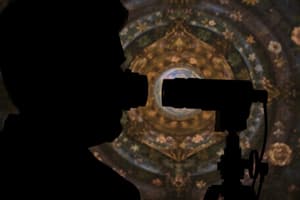Podcast
Questions and Answers
What is an apostilb?
What is an apostilb?
- A type of visual testing equipment
- An absolute unit of luminance (correct)
- A scale to measure visual acuity
- A relative unit of luminance
The decibel scale is standardized across different visual field testing instruments.
The decibel scale is standardized across different visual field testing instruments.
False (B)
What does the acronym WANDER stand for in visual field report interpretation?
What does the acronym WANDER stand for in visual field report interpretation?
WHAT WAS DONE?
The dimmest stimulus on the Humphrey perimeter is measured at _______ decibels.
The dimmest stimulus on the Humphrey perimeter is measured at _______ decibels.
Match the following test areas with their degrees:
Match the following test areas with their degrees:
Which strategy is known for being the most accurate and time-consuming due to its repetitive bracketing method?
Which strategy is known for being the most accurate and time-consuming due to its repetitive bracketing method?
The central 10 degrees test omits all rings except those at the nasal part.
The central 10 degrees test omits all rings except those at the nasal part.
What is the main purpose of the central 10 degrees test?
What is the main purpose of the central 10 degrees test?
In testing, the distance between rings in the central 10 degrees is ___ degrees.
In testing, the distance between rings in the central 10 degrees is ___ degrees.
Match the following visual field strategies with their descriptions:
Match the following visual field strategies with their descriptions:
Flashcards are hidden until you start studying
Study Notes
Visual Field Testing Overview
- Visual field testing is crucial for diagnosing retinal conditions by measuring visual field function.
- Modern perimeters can present challenges in interpretation, emphasizing the need for improved understanding of visual field printouts.
Apostilbs and Decibels
- Luminance of test targets in perimetry is measured in apostilbs, an absolute unit of luminance.
- Decibels (dB) provide a relative scale for measuring sensitivity; 0 dB is the brightest stimulus, while the dimmest varies by device (40 dB for Octopus, 50 dB for Humphrey).
WANDER Scheme for Interpretation
- The WANDER scheme offers a systematic approach for interpreting visual field reports, standing for various assessment components.
Test Area and Strategy
- Understanding the test area (60, 30, 24, or 10 degrees) and strategy used (e.g. Full Threshold, SITA FAST) is essential for accurate interpretation.
Central 30 and 24 Degrees Test
- Central 30 degrees test includes 76 test points; Central 24 degrees test includes 54 test points, omitting some peripheral rings.
- The 10 degrees test focuses on fine details in central vision, useful for detecting macular issues or advanced glaucoma.
Testing Strategies
- Full Threshold Strategy: Time-consuming, using a 4-2 dB staircase method for precise data.
- Fast Threshold Strategies: Rely on visual models; stimulate areas differently based on central sensitivity versus peripheral levels.
- Screening: Faster tests, detecting significant defects (4-5 dB below normal), often require confirmation with more detailed tests.
Short-Wavelength Automated Perimetry (SWAP)
- SWAP uses a blue stimulus on a yellow background for testing sensitivity to short wavelengths.
Reliability Checks
- Fixation Loss: Measures patient responses to stimuli targeted at the blind spot; should be under 33% for reliability.
- False Positive Responses: Occur when patients respond to audible prompts without a visual stimulus; indicates potential reliability issues.
Fluctuations in Visual Field Measurements
- Short-term Fluctuation: Variability in responses during a single exam, typically between 1-2 dB.
- Long-term Fluctuation: Changes in measured thresholds between different examinations.
Analyzing Normal vs. Abnormal Fields
- Gray scale interpretation offers a general sense of visual field status but should not be solely relied upon due to potential inaccuracies in filled data.
- Total Deviation: Compares a patient's sensitivity with age-specific norms, indicating the degree of deviation in performance.
Pattern Deviation
- Pattern deviation showcases the relative performance of a patient compared to expected outcomes, highlighting areas needing attention based on comparative group performance.
Conclusion
- Enhanced knowledge and systematic interpretation protocols are essential for accurate assessments in optometry, particularly in visual field evaluations.
Studying That Suits You
Use AI to generate personalized quizzes and flashcards to suit your learning preferences.




